The worst PC ports ever
Think a 30 fps lock is bad? These abominations show you how much worse a bad PC port can get.
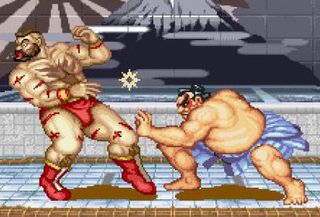
Every so often we get a reminder of the Bad Old Days. A wobbly port like Arkham Knight or Nier: Automata, that reminds us PC gaming was once the seven-toed forgotten child of formats, scuttling around in the crawlspace of our hobby, screaming for the love so cruelly denied to it.
Sometimes we need to revisit those dark times, lest we forget how handsome, well-adjusted and lucky we are now. That’s not to suggest things are perfect—you’re right to look red-faced, Mortal Kombat X—but consider it a lesson in humility. A way of reminding us how things used to be much, much worse.

Enslaved: Odyssey to the West (2013)
Three years. That’s how long Ninja Theory had to make a PC port of lush, post-apocalyptic Andy Serkis chimp ‘em up Enslaved: Odyssey to the West. It was released on consoles in 2010 but didn’t arrive on PC until 2013, in a state that’s since become the metric for measuring lazy PC conversions: low res assets, capped at 30fps, no VSync option in the settings, enforced motion blur. There are certainly far worse conversions on this list, but Enslaved is bad in a specifically disappointing, ‘you could have been so much more’ kinda way.
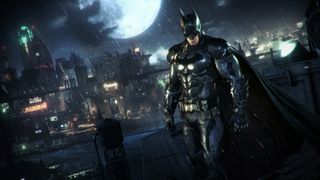
Batman: Arkham Knight (2015)
The PC port of Arkham Knight is like a warning—a hitching, stuttering bat-symbol burned into the back of our retinas. A caution that should we ever become complacent, the forces of darkness will rise again, and we’ll end up with past-generation half-ports of games we’ve waited years to adore. Running Arkham Knight on Windows 10 with less than 12GB of RAM is like trying to fight the Dark Knight after an evening spent watching street fights on YouTube. It simply won’t work.
Even if it’s (kind of) fixed now, Arkham Knight forever stained with the ignominy of being pulled from Steam. A sad end to a great series.
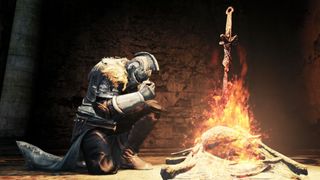
Dark Souls (2012)
We asked for this. I mean, we literally asked for it. In fact, we begged From Software for a PC port of Dark Souls. The result was like a Faustian pact from an Amicus horror film. Yes, we got what we asked, but in a way that was so twisted and hopeless as to be barely recognizable. PC hero Durante patched terrible audio and resolution issues in the vanilla version of the game, but we’re still allowed to marvel at how badly it missed the mark. On the bright side, From Software's ports of Dark Souls 2 and 3 have been fantastic in comparison, and Dark Souls inspired a skilled modding community to tinker for years, even altering its 30 fps cap.
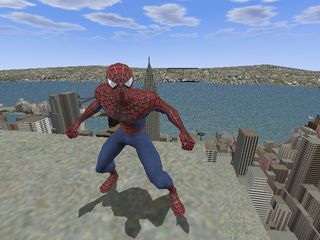
Spider-man 2 (2004)
Most games on this list get kicked for being shitty versions of console games. Spider-Man 2 wasn’t even that. It was literally a different game. Instead of the Teyarch-developed movie tie-in, Texas studio Fizz Factor (Fizz Factor!) made a game more suitable for children. Or, to be more accurate, nobody ever.
The open, web-swinging console game was replaced with automated heroism: you simply clicked on enemies and buildings to interact to them. A point-and-click Spider-man should be amazing, but this was one step removed from holding the right mouse button to have a stumbling pubescent relationship with Mary Jane Watson. Worst of all, the differences weren’t made abundantly clear during development, so anyone who bought the PC version expecting a crisp console conversion got burned. The most significant creative misstep since Tobey Maguire’s evil dance in Spider-Man 3 (which was so bad, it warped the very concept of time to make this joke work).
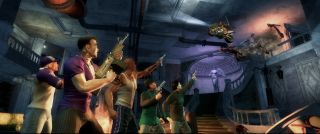
Saint's Row 2 (2009)
The PC port of Saint’s Row 2 is so bad it’s passed into legend. If someone had set out to make something this disastrous, they’d deserve some kind of terrible, shitty medal. But they didn’t, so they deserve nothing. Saint’s Row developer Volition had little to do with the port. Instead, it was done by CD Projekt Localisation Team (part of the same parent company as CD Projekt Red). The game was developed with a specific Xbox 360 CPU clock speed of 3.2Ghz in mind. The further away you get from that, higher or lower, the worse the game runs. That’s right: PC owners were essentially being punished for having better machines. (And worse ones too, but I’m skipping over that inconvenient truth.) Even if you’re playing on a machine with RAM to spare, Saint’s Row 2 ignores it, like a vegan refusing to eat his way out of a cage of chops.
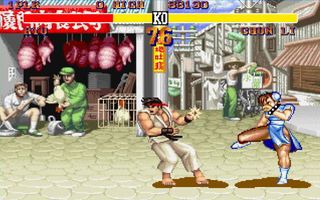
Street Fighter 2 (1993)
The PC port of Street Fighter 2 could be a whole feature on its own. It looks handsome enough, but everything else is an abomination. There’s the music, which sounds like a doomed robot armpit farting the funeral march on a sinking cruise vessel; the jumping, which displays the same swaggering disregard for gravity normally reserved for Dragon Ball Z games; and the backgrounds, which features onlookers frozen in time, staring helplessly, trapped like temporal sweetcorn in this eternal turd of a port. Forget locked frame rates or shoddy netcode: everything about Street Fighter on PC is wrong.
If you hate yourself, you can even play it here. The only thing it has in its favour is at least it’s not Street Fighter 1.
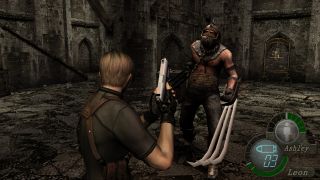
Resident Evil 4
Even people who’ve completed Dark Souls using a Rock Band guitar/dance mat/USB toaster can’t handle the controls in the PC version of Resi 4. They’re terrible. Whoever did the key binding can only have read stories about PC gaming painted onto the walls of prehistoric caves. It doesn’t support mouse aiming, and the key choices for the actions resemble a puzzle at the end of an Indiana Jones movie. Hold Left Shift to use your knife. Right Shift for your gun. Enter to attack. Shift and right Control to reload. Shift and rat-a-tat-tat on Number Lock to use a herb. (Only the last one is a joke, tragically.)
Worst of all, if you tweaked your key bindings it wouldn’t tell you when quick-time events happened, making it a test of memory, reactions and your infinite patience as a noble PC gamer.
Years later, the Resident Evil 4 HD port fixed most of these issues and is now our favorite way to play the game. Aww, happy endings.
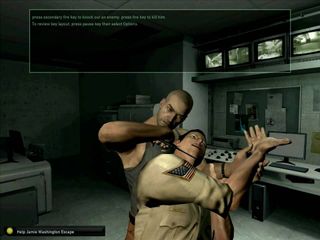
Splinter Cell: Double Agent (2006)
Splinter Cell may be known first and foremost as an Xbox series, but Sam Fisher was an experienced PC spy, too. Pandora tomorrow had some issues, but the series mostly made the jump from console to PC unscathed in its early years. That changed with the console port of 2006's Double Agent, the first released on Xbox 360. Steam reviews tell a pretty consistent story, criticizing constant crashing, poor controller support, and game-breaking bugs. Most damning: the lighting didn't work properly for some players. In a stealth game. Where hiding in shadows is, well, literally the point. Might as well give up the whole superspy thing and go cry into a mai tai on a well-lit beach, Sam.
Apparently lighting problems afflicted the older Splinter Cell games, too, depending on the hardware, but in Double Agent it was the most egregious of many, many issues adding up to a woeful port.
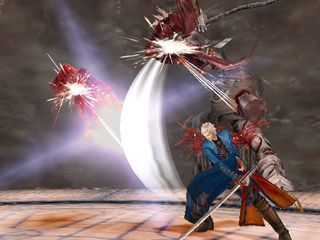
Devil May Cry 3 (2006)
Devil May Cry 3 is part of the Holy Trinity of Dogshit Capcom Ports, alongside Resi 4 and Onimusha 3 (although the ports were actually handled by a company called SourceNext and published by Ubisoft). It automatically defaults to windowed mode, and you need to switch the axis on your controller because it defaults to the right-hand stick. Or, you could just try it that way, like an 8-year-old playing Micro Machines on the SEGA Genesis. Like almost every game on this list, most of these problems can be fixed by imaginative Googling and fan patches, but in order to avoid framerate issues you actually have delete music and menu sounds yourself. How did it come to this?
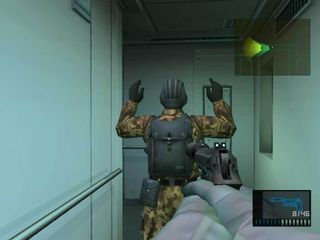
Metal Gear Solid 2 (2003)
It’s no surprise that a game designed to embrace all the idiosyncrasies of the PS2 was hit-and-miss on PC. Even Sony developers struggled to comprehend the PS2’s arcane infrastructure, so what hope did we have? MGS 2 worked fine on some systems, but on others you could expect flickering textures, disappearing shadows, missing effects, frequent crashes and flaky audio. It used the new analogue buttons on the PS2 Dualshock, but didn’t bother to adjust this for keyboard controls; if a section required pressure sensitive actions, you were bollocksed. It’s also a mighty 7GB install, when similar games at the time weighed in at around 1.5-2GB. As unwieldy and overblown as MGS 4.
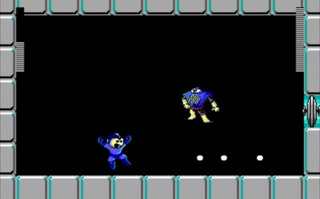
Mega Man (1990)
PC gamers have it easy these days. Properly optimised, there’s every reason the PC version of a game should be the best. Terrible ports can be blamed on the conversion, not the hardware. But it wasn’t always like this. Back in the late 80s, PC hardware couldn’t always keep up with consoles, which is why our gaming forefathers ended up struggling through monstrous conversions like Mega Man. Oh, the humanity.
This was released the same year id released Commander Keen—which was itself born out of an attempt to port Mario 3—so we can’t blame it all on feeble hardware.
Most Popular

